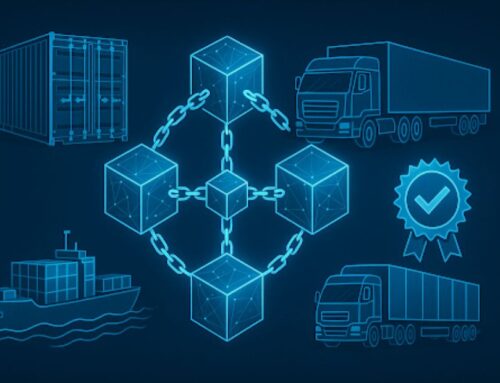Logistics is a complex and dynamic field, managing the flow of goods and resources from suppliers to consumers. The 7 R’s of logistics – Right Product, Right Quantity, Right Time, Right Place, Right Price, Right Customer, and Right Condition – serve as a comprehensive framework, optimizing supply chains and supporting efficient operations. These principles guide logistics management, ensuring seamless supply chains, balancing supply and demand, and minimizing costs.
The 7 R’s of logistics represent key aspects of logistics management, ensuring efficient operations. The Right Product ensures the correct goods are sourced to meet market demands, while the Right Quantity balances supply and demand, avoiding overstocking and stockouts. The Right Time focuses on timely deliveries, managing transportation schedules and lead times. The Right Place oversees distribution networks, warehousing, and order fulfillment. The Right Price manages costs throughout the supply chain, balancing procurement, transportation, and distribution expenses. The Right Customer ensures services are tailored to different needs, balancing delivery times, accuracy, and service quality. Finally, the Right Condition ensures goods are delivered in good condition, minimizing damage and maintaining product integrity.
This article aims to explore how each R contributes to efficient logistics operations, delving into the specific roles and impact of each principle. It will examine how the 7 R’s guide logistics management, balancing supply chains, minimizing costs, and meeting consumer needs. The article will also explore how these principles adapt to today’s logistics landscape, supporting sustained success and efficient operations.
R1: Right Product
Product Selection
Logistics management ensures the right product is sourced, meeting market demands and balancing supply chains. This involves evaluating consumer needs, analyzing market trends, and selecting products that align with demand. Product selection also considers factors such as quality, cost, and availability, ensuring seamless supply chains. Logistics professionals work closely with suppliers, balancing sourcing strategies, negotiating contracts, and overseeing procurement processes to secure the right products.
Quality Assurance
Quality control measures play a crucial role in maintaining consistent product quality, ensuring goods meet industry standards. This involves implementing quality assurance measures, conducting inspections, and managing quality audits. Logistics professionals work closely with production teams to oversee the manufacturing process, maintaining product consistency. Quality control ensures that goods delivered to consumers are of high quality, supporting customer satisfaction and brand reputation.
Inventory Management
Inventory levels are balanced to ensure product availability without overstocking, supporting seamless supply chains. This involves managing inventory management software, tracking stock levels, and balancing supply and demand. Inventory management techniques, such as just-in-time (JIT) and ABC analysis, help minimize overstocking, reducing storage costs and enhancing supply chain flexibility. Logistics professionals oversee inventory replenishment, ensuring goods are available to meet consumer needs without overburdening storage facilities.
R2: Right Quantity
Demand Forecasting
Demand forecasting uses historical data and market trends to anticipate needs, balancing supply and demand. Logistics professionals analyze sales patterns, consumer behavior, and market trends to forecast demand accurately. This forecasting supports inventory management, ensuring adequate stock levels to meet consumer needs. Demand forecasting also helps logistics professionals adjust production schedules, distribution networks, and order fulfillment, maintaining efficient operations.
Replenishment Strategies
Logistics manages stock replenishment, avoiding overstocking and stockouts, supporting balanced supply chains. This involves managing relationships with suppliers, overseeing procurement processes, and tracking inventory levels. Logistics professionals implement replenishment strategies that balance supply and demand, ensuring consistent product availability. Regular evaluations help identify replenishment needs, adjusting orders and replenishing stock as needed.
Just-in-Time (JIT) Inventory
JIT inventory minimizes storage costs and ensures products are delivered as needed, supporting seamless logistics operations. This approach reduces storage costs, prevents overproduction, and balances supply and demand. Logistics professionals coordinate with suppliers, managing procurement processes and replenishment schedules to match demand. JIT inventory supports balanced supply chains, minimizing waste, reducing costs, and ensuring timely deliveries.
R3: Right Time
Transportation Schedules
Logistics coordinates transportation routes and schedules to ensure timely deliveries, supporting efficient logistics operations. This involves selecting the most suitable transportation modes, including road, rail, air, and sea freight, to balance speed, cost, and availability. Logistics professionals manage transportation schedules, optimizing routes and coordinating carrier networks to minimize delays. Real-time tracking enhances visibility throughout the supply chain, allowing proactive management of potential disruptions and ensuring timely deliveries.
Lead Times
Logistics manages lead times, balancing procurement, production, and distribution to ensure seamless supply chain operations. This involves coordinating supplier deliveries, managing production schedules, and overseeing distribution networks. Logistics professionals work closely with suppliers, manufacturers, and distributors to minimize lead times, ensuring goods flow smoothly through the supply chain. This balanced approach supports timely deliveries, reducing bottlenecks and maintaining efficient operations.
Last-Mile Delivery
Last-mile delivery is a critical component of logistics, ensuring goods reach customers on time, supporting efficient operations. This involves managing the final stage of distribution, from warehouses to consumers’ doorsteps. Logistics professionals optimize last-mile delivery by coordinating transportation routes, managing delivery schedules, and balancing costs with speed. The integration of real-time tracking technology enhances last-mile delivery, providing visibility and allowing for proactive management. This efficient last-mile delivery enhances customer satisfaction, reduces delays, and supports seamless logistics operations.
R4: Right Place
Distribution Networks
Logistics builds distribution networks to connect suppliers, manufacturers, and consumers, supporting efficient supply chain operations. This involves coordinating the flow of goods across various channels, including wholesalers, retailers, and e-commerce platforms. Logistics professionals optimize distribution networks, balancing costs, lead times, and service quality. They also manage relationships with various stakeholders, ensuring seamless coordination throughout the supply chain. By building efficient distribution networks, logistics professionals support timely deliveries, enhance supply chains, and meet consumer needs.
Warehousing
Warehousing plays a pivotal role in storing goods, acting as an intermediary between production and distribution. Logistics managers oversee inventory management within warehouses, tracking stock levels, managing storage space, and ensuring timely order fulfillment. Warehousing also supports just-in-time (JIT) inventory strategies, reducing storage costs and minimizing overstocking. This balanced warehousing approach supports seamless distribution networks, enhancing supply chain flexibility and reducing costs.
Order Fulfillment
Logistics manages order fulfillment, processing orders and ensuring timely deliveries to consumers. This involves picking, packing, and shipping goods, balancing efficiency with accuracy. Logistics professionals streamline order fulfillment processes, reducing delays and ensuring goods reach customers on time. The integration of order processing software enhances fulfillment, tracking orders, managing inventory, and ensuring seamless operations. This comprehensive order fulfillment approach supports efficient distribution networks, enhancing customer satisfaction and minimizing delays.
R5: Right Price
Cost Management
Logistics manages costs throughout the supply chain, balancing procurement, transportation, and distribution expenses. This involves negotiating contracts with suppliers, managing transportation costs, and overseeing distribution networks. Logistics professionals implement strategies to minimize costs, including consolidating shipments, optimizing transportation routes, and balancing storage expenses. Cost management supports efficient logistics operations, reducing expenses and maximizing profitability.
Supplier Negotiations
Logistics professionals negotiate with suppliers, balancing cost with quality, supporting seamless procurement. This involves evaluating suppliers based on factors such as cost, quality, and reliability, ensuring balanced supply chains. Contracts are negotiated to establish terms, including pricing, lead times, and delivery schedules, minimizing costs. Ongoing management involves tracking supplier performance, addressing potential issues, and renegotiating contracts as needed. This balanced approach ensures consistent procurement, reducing costs and supporting efficient logistics operations.
Transportation Costs
Logistics manages transportation costs, balancing modes of transportation and minimizing expenses. This involves evaluating various transportation options, including road, rail, air, and sea freight, selecting the most efficient option for each shipment. Logistics professionals optimize transportation routes, reducing lead times and minimizing costs. Consolidating shipments is another strategy, reducing shipping expenses and supporting efficient logistics operations. This comprehensive management enhances logistics efficiency, balancing costs with service quality.
R6: Right Customer
Customer Segmentation
Logistics uses customer segmentation to tailor services, balancing different needs and demands. This involves dividing the customer base into various segments, including demographics, geographic location, and purchasing behavior. By segmenting customers, logistics professionals can adjust delivery schedules, product offerings, and service quality to match specific needs. This tailored approach supports balanced supply chains, meeting diverse demands and ensuring seamless operations. Customer segmentation also enhances customer satisfaction, balancing service quality with individual preferences.
Order Accuracy
Logistics ensures accurate deliveries, maintaining customer satisfaction by minimizing errors. This involves implementing quality assurance measures, tracking orders throughout the fulfillment process, and conducting final checks before shipping. Order accuracy is crucial for maintaining customer trust, ensuring that goods reach consumers as intended. The integration of order processing software enhances accuracy, tracking orders, managing inventory, and minimizing discrepancies. This comprehensive approach supports seamless logistics operations, balancing accuracy with efficiency.
Customer Satisfaction
Logistics manages customer satisfaction by balancing delivery times, accuracy, and service quality. This involves coordinating distribution networks, optimizing transportation routes, and reducing lead times, ensuring timely deliveries. Order accuracy enhances customer satisfaction, minimizing errors and maintaining trust. Service quality is another key aspect, balancing speed with consistent service. By managing these factors, logistics professionals enhance customer satisfaction, supporting brand reputation and long-term success.
R7: Right Condition
Quality Control Measures
Logistics oversees quality control, ensuring goods are delivered in the right condition. This involves implementing quality assurance measures, conducting inspections, and managing quality audits. Logistics professionals monitor goods throughout the supply chain, minimizing damage and maintaining product integrity. Quality control measures support consistent service, ensuring goods reach consumers as intended. This comprehensive quality management supports seamless logistics operations, enhancing customer satisfaction.
Packaging and Handling
Packaging and handling practices minimize damage, maintaining product integrity throughout the supply chain. Logistics professionals ensure goods are packaged securely, balancing protection with cost-effectiveness. This includes using durable materials, secure seals, and proper labeling, reducing the risk of damage. Handling practices also contribute to product integrity, including careful loading, unloading, and transportation. These comprehensive practices support seamless logistics operations, maintaining goods in the right condition.
Tracking and Monitoring
Tracking and monitoring tools provide visibility throughout the supply chain, ensuring products remain in the right condition. Real-time tracking technology enables logistics professionals to monitor goods at every stage, addressing potential issues proactively. This tracking enhances visibility, allowing for accurate delivery estimates and seamless distribution. Monitoring tools also support quality control, tracking goods throughout the supply chain, minimizing damage, and maintaining product integrity. This balanced approach supports efficient logistics operations, enhancing service quality.
Conclusion: Mastering Logistics Efficiency
The 7 R’s of logistics – Right Product, Right Quantity, Right Time, Right Place, Right Price, Right Customer, and Right Condition – form a comprehensive framework that guides logistics management. These principles support efficient supply chains, balancing supply and demand, minimizing costs, and maintaining product integrity. Logistics professionals navigate various challenges, adapting to changing market demands, incorporating technological advancements, and balancing sustainability. By integrating these principles, logistics management ensures seamless operations, enhances customer satisfaction, and supports long-term success.









